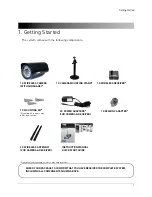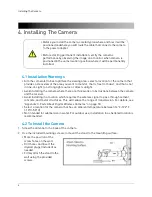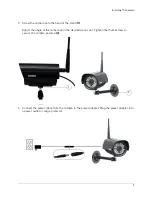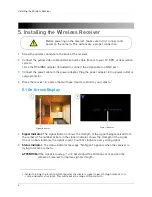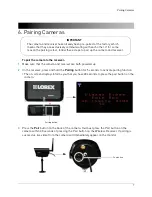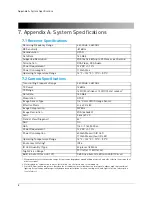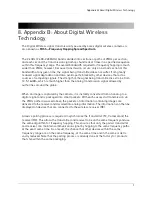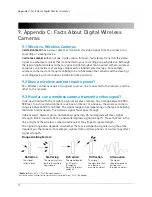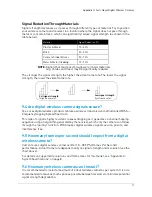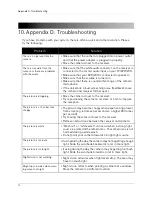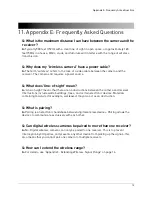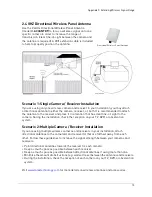
13
Appendix E: Frequently Asked Questions
11. Appendix E: Frequently Asked Questions
Q: What is the maximum distance I can have between the camera and the
receiver?
A:
Typically 500 feet (152m) with a clear line of sight in open space, or approximately 165
feet (50m) in a house. Walls, studs, and furniture will interfere with the range of wireless
transmission.
Q: Why does my "wireless camera" have a power cable?
A:
The term "wireless" refers to the lack of a video cable between the camera and the
receiver. The camera still requires a power source.
Q: What does 'line-of-sight' mean?
A:
'Line-of-sight' means that there are no obstructions between the camera and receiver.
Obstructions include walls, buildings, trees, and certain electronic devices. Materials
containing moisture (for example, wet leaves) may also act as an obstruction.
Q: What is pairing?
A:
Pairing is an electronic handshake between digital wireless devices. Pairing allows the
devices to communicate exclusively with each other.
Q: Can digital wireless cameras be paired to more than one receiver?
A:
No. Digital wireless cameras can only be paired to one receiver. This is to prevent
interception by 3rd parties, and prevents any other device from picking up the signal—this
also means that you cannot pair one camera to multiple receivers.
Q: How can I extend the wireless range?
A:
For details, see “Appendix F: Extending Wireless Signal Range” on page 14.



